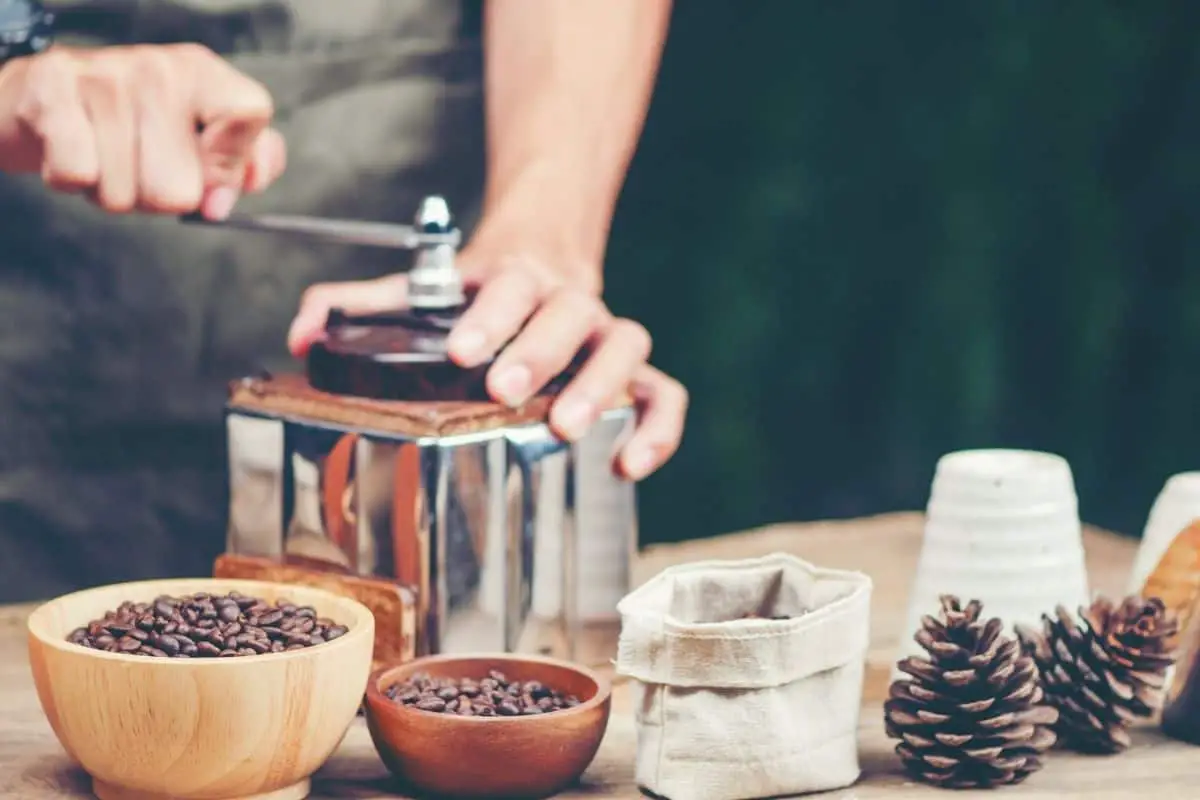There’re several considerations to make when brewing coffee. One of the most important considerations to make is the grind size.

While the water quality, water temperature, and the kind of beans used when brewing coffee are important, making a balanced brew is highly dependent on the grind size. In this article, you’ll learn more about the importance of brewing coffee with the right grind size.
What’s the Importance of Grind Size?
The process of making coffee involves several processes. Among these processes, extraction is an important process. When brewing coffee, water passes through ground coffee beans, thereby extracting coffee flavors. The extraction process involves many variables that can result in different coffee tastes.
One of the main extraction variables is pressure. The amount of pressure used in pushing water through ground coffee affects extraction. For instance, espresso coffee makers require more pressure to push hot water through the grounds in the portafilter. On the contrary, French presses use less pressure. Thus, these two different coffee brewing methods result in two different brews in terms of taste.
Another extraction variable is the grind size. The fineness or coarseness of the grind used in brewing will determine how slowly or quickly water flows through the coffee. If the grind is too fine, water will extract unwanted flavors. On the other hand, if the grind is too coarse, water will flow through without extracting important flavors.
The grind size and water pressure determine the extent of extraction. Thus, adjust the brewing method until you get the perfect extraction.
Types of Coffee Grinds
Now that you know how the grind size affects the brew, it’ll help to discuss the main types of coffee grinds and the best type of coffee to make with each grind size.
- Extra-Coarse Grind
Extra-coarse grind resembles peppercorns. It’s best for making cold brews. Also, it’s great for prolonged submersion in water due to the slow extraction.
- Coarse Grind
Coarse grounds have a consistency similar to that of sea salt. A coarse grind is perfect for making French press coffee. The French press requires a brewing time of about 4 minutes for perfect extraction of flavors.
- Medium-Coarse Grind
Medium-coarse grind resembles sand. It requires about 2 minutes of extraction for a well-balanced cup of coffee. It’s perfect for clever drippers or Chemex coffees.
- Medium Grind
It’s a classic grind that produces a generic brew. It’s perfect for brewing drip coffee.
- Medium-Fine Grind
A medium-fine grind is perfect for making siphon coffees and pour overs. With this grind, you can experiment with new coffee brewing methods.
- Fine Grind
A fine grind is perfect for making espresso. While tuning your espresso may require a coarser grind, fine grounds are the best grind size for making tasty espresso.
- Super Fine Grind
A super-fine grind is mostly used for brewing Turkish coffee.
Rules on Grind Size
Now that you know more about different grind sizes and the best coffee brewing method for each grind, it’ll help to know the general rules related to grind size.
Rule #1- Finer grinds brew stronger coffee
Generally, finer grinds brew stronger coffee. However, this can only happen with other variables constant and with the proper brewing method for finer grinds. For instance, using finer grinds with your French press will result in over-extraction and a dense brew. As a result, the brew won’t be tasty.
Rule #2- Coarser grinds require a longer extraction time
If you’re using a coarser grind, you’ll need more brewing time for enough extraction. For instance, an espresso uses fine grounds and only takes 20 to 30 seconds for a perfect shot. On the other hand, the cold brew method requires brewing with an extra-coarse grind and will take approximately 12 hours for a balanced brew.
Rule #3- Consider other brewing variables
You should adjust the fineness or coarseness of your grind depending on other brewing variables such as the brewing method used, type of beans, water pressure, and water temperature.
As you can see, you should select your grind depending on the brewing method you’re using. Choosing the right grind size will produce a perfect cup of coffee.